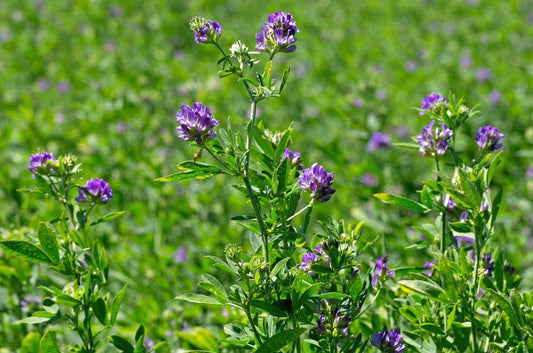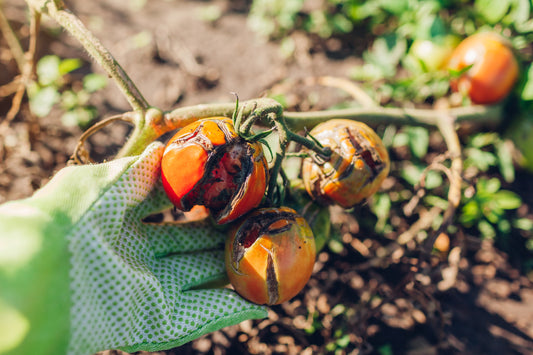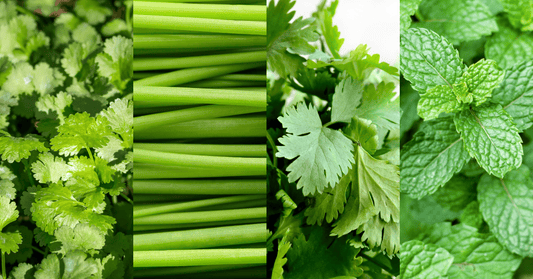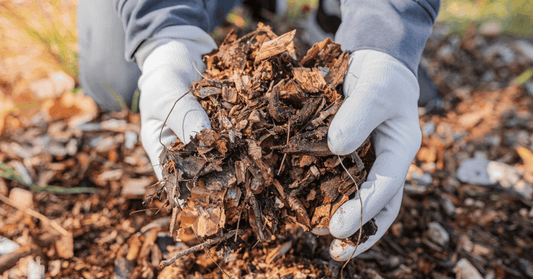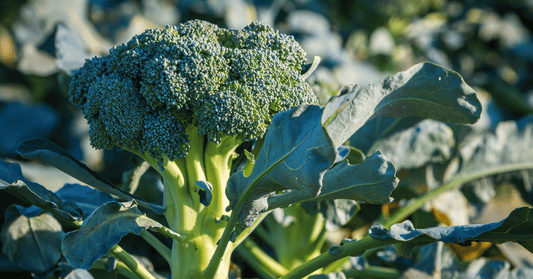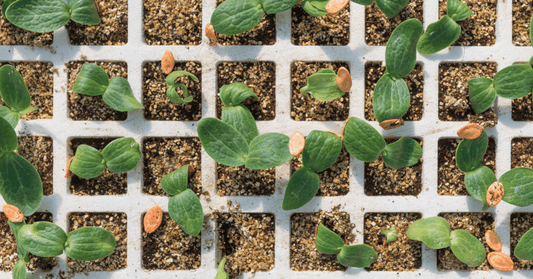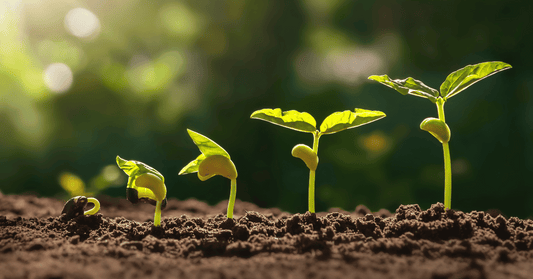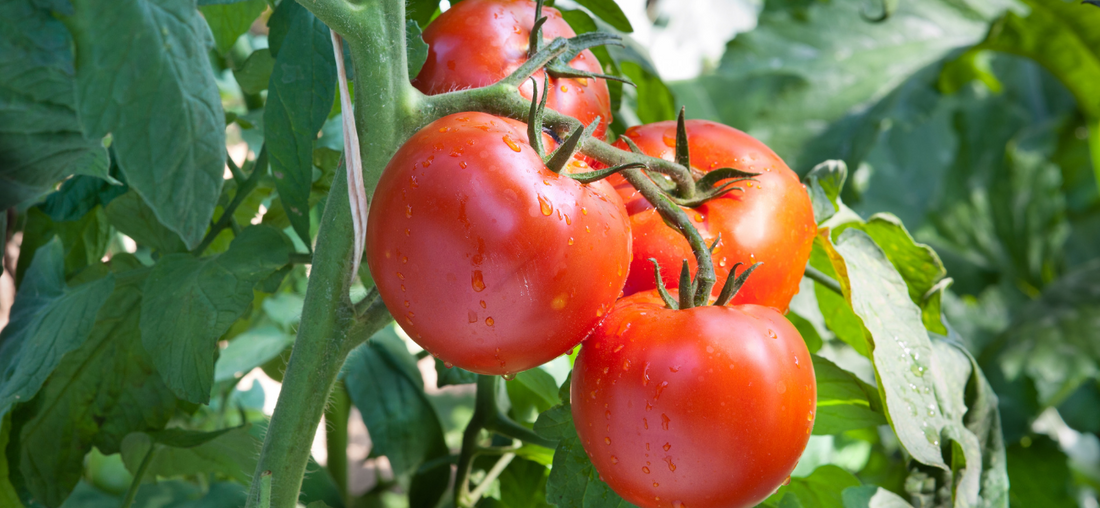
How to Grow Lots Of Tomatoes With 6 Simple Tips
You don't have to be a gardening expert to grow lots of tomatoes. In fact, one of the most popular and easy to grow fruits at home is the tomato.
You can grow tomatoes in almost any climate as long as you have at least 6 to 8 hours of sunlight a day.They can be grown in small container pots on the balcony or outside in the garden.
While tomatoes generally do best in the summer, some areas can extend the tomato growing season well into the fall. With higher hardiness zones such as 8, 9, and 10 growing tomatoes can be done well into October!
With so many varieties to choose from, there is a tomato variety to suit everyone's taste buds, from tiny sweet cherry tomatoes to rich tasting purplish black tomatoes.
So, if you want to increase the number of tomatoes you get on your vines, these 6 simple tomato growing tips and the help of EM-1 Microbial Inoculant, will help you produce a bountiful harvest of fresh homegrown tomatoes!
Here are our 6 Simple Tips For Growing Lots of Tomatoes:
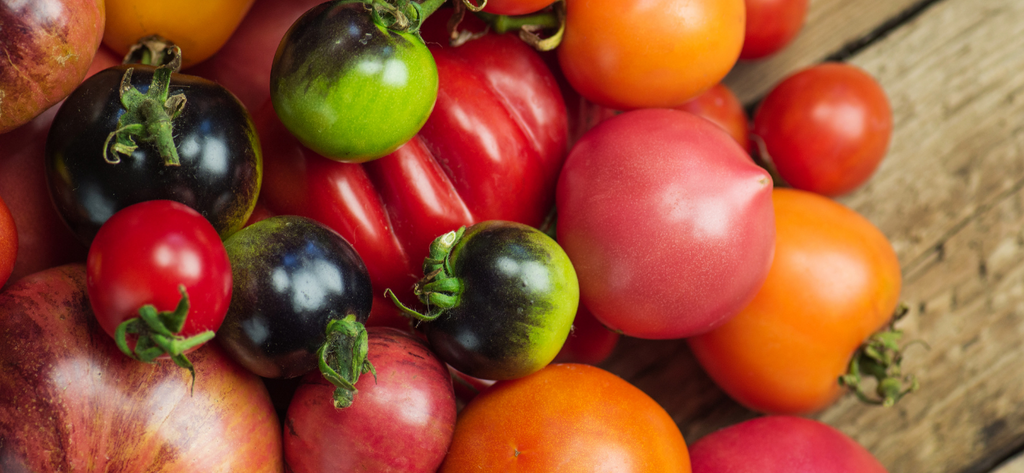
1. Pick the right variety for your area and space
Tomato growing is popular because of the many tomato varieties and the large range of hardiness zones they grow in. Organic heirloom varieties are increasingly becoming popular as they tend to have better flavor and are loaded with antioxidants. Each plant, even same varieties, can vary as they are not clones like many Genetically Modified (GMO) options you find in the store. Heirlooms create unique tomatoes full of lumps, bumps, stripes, and fun colors that look funky compared to their perfectly round and red counterparts.
Regardless of your hardiness zone or space, choose organic heirloom varieties as they have more vitamin c, potassium, folate, and vitamin K. They also contain more lycopene than non-organic varieties. Lycopene is a carotenoid that has been heavily studied in the prevention of many cancers.
With so many varieties to choose from, there is a tomato variety to suit everyone's taste buds, from tiny sweet cherry tomatoes to rich tasting purplish black tomatoes.
So, if you want to increase the number of tomatoes you get on your vines, these 6 simple tomato growing tips and the help of EM-1 Microbial Inoculant, will help you produce a bountiful harvest of fresh homegrown tomatoes!
Tomato growing will also depend on the type that best fits your needs and space. Tomatoes are either "Determinate" or "Indeterminate". Determinate varieties ripen all their tomatoes in a 2-week period and grow more bush-like. Determinate tomatoes are perfect for canning and work well in container gardens on patios and balconies.
Unfortunately, heirloom tomatoes and other common varieties are almost always indeterminate. For a determinate heirloom variety, try "Rutger's".
Indeterminate tomatoes produce tomatoes all season long and grow longer vines. These tend to not work well in small containers or smaller patios as they do grow tall or sprawl more. However, in larger pots and with some frequent pruning, indeterminate tomatoes can be grown in containers on your patio or balcony.
2. Start your seeds and transplants off right
When planting seeds it is best to start them in a seedling tray and provide plenty of warmth and sunshine. Growing tomatoes need to be given room to encourage strong plant growth, so it is best to thin them out when they are young plants or only plant 1-2 seeds per cell or small pot.
Healthy, living soil full of beneficial organisms is important when starting tomatoes from seed as it will give them the best start and result in healthier plants. Plant-microbial relationships help increase growth of seeds and decrease the stress on transplants by strengthening the roots.
Do not plant tomatoes into the ground until they have developed a strong root system. Research on Effective Microorganisms (EM-1) and tomato seeds showed an increase in germination and plant growth when seeds were soaked for 30 minutes in an EM solution.
Once tomato seedling reaches transplant size (i.e. they have a second set of leaves) and have a strong extensive root system, they can be transplanted into the ground. Be sure the area receives 6 to 8 hours of sunlight and plant tomatoes at least 2 feet apart. Planting tomatoes can be unique as they like to be planted deep with part of their lower leaves and stem covered.
Seedlings should be planted with the lowest leaves covered by soil. New roots will sprout off the stem and this generally leads to more fruit and stronger plants. EM-1® can help decrease transplant stress and help increase plant growth and vigor. In addition, EM-1® will increase the soil health by providing important beneficial microbes that break down organic matter and cycle nutrients into plant available forms.
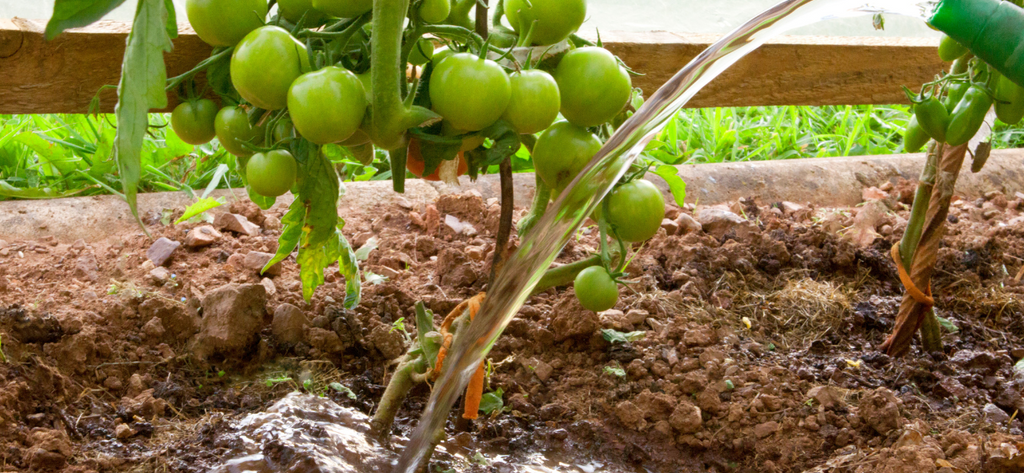
3. Don't water the leaves.
As a general rule, a tomato plant requires 1-2 inches of water per week. In hotter climates this is best spread out over the week in daily or every few day increments, where as more temperate climates can handle weekly watering. Tomatoes don't like water on their leaves as it increases the chance of fungal diseases as well as leaf burn.
Do not flood the tomato, instead water slowly to allow water to permeate through instead of running off. EM-1® has been shown to decrease water usage by 30% by increasing infiltration into the soil. Soil microbes mine the soil for organic material and nutrients, in doing so pores and soil structure are increased. By adding nutrient-rich organic matter to the soil and EM-1® you can save money and save water.
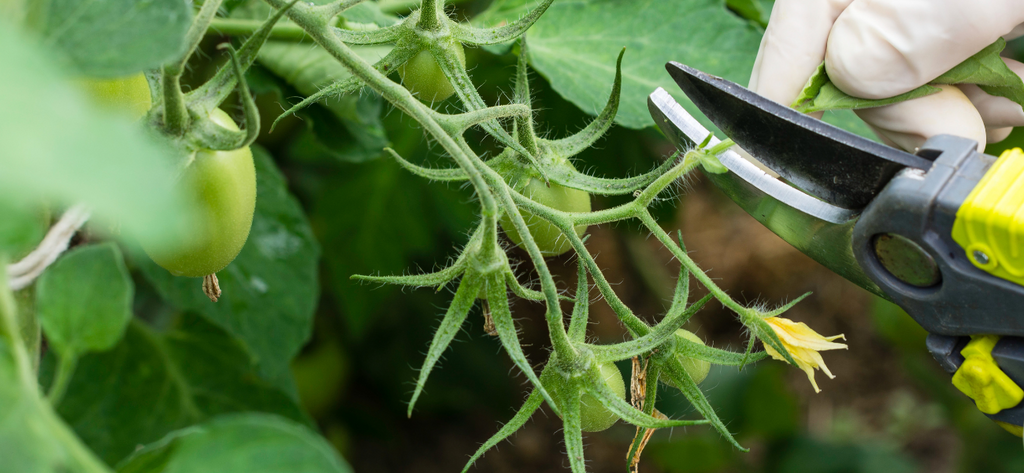
4. Prune and train your tomatoes regularly
Indeterminate type tomatoes can easily get out of control when not pruned frequently. Besides taking over the garden, an unpruned tomato will not produce fruit well either. Once tomato plants are 3-4 foot tall, you should begin to remove the suckers from the bottom of the stem. These are the older leaves and tend to increase the risk of fungal disease. Removing them increases air flow and helps the tomato plants grow upright.
For indeterminate type tomatoes, it is best to remove the new leaves that tend to grow at the axis of the stem and larger leaves (see picture below). This is not an issue on determinate bush tomatoes as they stay compact and small. Simply pinch these small tomato leaves off with your fingers every few days to weekly all the way up and as the plant grows. Removing allows the plant to use nutrients to grow tomatoes instead of unneeded leaves. Continue to remove lower leaves as they turn yellow.
Tomatoes can be trained to grow with a variety of staking options such as stakes, a tomato cage, trellises, or tomato spirals. Tomato cages are readily available and easy to use as they are simply staked into the soil. Staking tomatoes on any of the above can result in an increased tomato yield and healthier fruit. Be sure to begin staking plants early as they are hard to train once they're larger.
5. Enrich the soil with microbes to get lots more tomatoes.
Research with EM-1® Microbial Inoculant in various countries have shown that the beneficial bacteria can increase the sweetness, growth, and strength of tomato plants and help fight off common problems. Using organic fertilizer instead of synthetics can also ensure you have successful organically grown tomato plants without added chemicals that can affect soil health.
Microbes increase Soil Health
One of the major outcomes when using EM-1® and Premium Bokashi Compost Starter on your organic tomato plants is the immediate increase in soil health. Applying EM-1® will increase the populations of yeast, photosynthetic bacteria, and lactic acid bacteria.
With the combination of nutrient-rich organic matter, the beneficial microorganisms speed up decomposition of the organic material and ensure your plants have plant available nutrients without the need for synthetic fertilizers.
While the yeast, photosynthetic bacteria, and lactic acid bacteria are consuming the organic matter they produce natural antibiotic compounds that decrease the populations of tomato pests. Soil full of beneficial microbes becomes self purifying and decreases the need for chemical pesticides and fungicides.
Premium Bokashi Compost Starter is an option that provides your soil with an organic fertilizer. TeraKashi® is fermented rice bran with the addition of Malibu Compost and provides antioxidants and minerals to your tomato plant. The Malibu Compost adds quality organic matter and increase soil structure and soil moisture.
Microbes increase fruit production and quality
A study on four varieties of tomatoes in Italy sought out to improve the yield and quality without the use of chemical fertilizers and pesticides. By using EM-1®, results showed an increase in tomato yield as well as enhanced antioxidant activity. Polyphenol and carotenoid (cancer reducing compound) was also increased. Overall the study saw a 20% increase in fruit production, a 70% increase in lipophilic (antioxidant), 40% in methanolic (antioxidant), as well as an increase in sweetness (Brix).
Microbes decrease use of chemicals
Chemicals not only harm the living organisms in the soil, but also human and environmental health. When synthetic fertilizers are added, plants no longer need the symbiotic relationship they have with microorganisms. Increasing soil health results in little need for added inputs including pesticides, fungicides, or chemical fertilizers.
6. Take care of common pest and disease
If you grow tomatoes then you know they are no stranger to pests and diseases. Common ailments include blossom end rot, blight, and the dreaded tomato hornworm among others.

Blossom End Rot:
Blossom end rot is a common tomato plant issue caused by a calcium deficiency. Tomatoes will begin to rot from the bottom and make the inside of the fruit mealy and inedible. Although lack of calcium in the soil may be the issue, it is more commonly a soil pH issue binding up the calcium or a watering problem causing periods of drought. Beneficial microorganisms in the rhizosphere can help in a variety of ways.
Besides being known to help naturally balance soil pH by cycling hydrogen, microbes in the rhizosphere can help calcium become more mobile and available to the plant. EM-1® specifically can decrease the risk of drought issues by helping soil become more permeable. If low calcium is indeed your issue, consider adding crushed egg shells for an all natural calcium boost.

Tomato Blight Treatment:
Lack of airflow and wet leaves is the main culprit for blight. The soil-borne fungi causes brown/black spots to form on older leaves, eventually causing the leaves to fall off. Rotating crops is one option as not all crops are susceptible. Another option is to spray your tomatoes with EM-1. Microbes such as Lactobacillus have natural antibiotic compounds that deter and/or get rid of fungal disease.

Tomato Hornworms:
These ugly and giant worms are a tomato growers dreaded pest. They can strip a tomato plant of foliage within days and they blend in very well. Unfortunately, the only option with these pesky worms is picking them off one by one. A UV or black light at night is a useful option. If you happen to have some backyard chickens, this is a delicious treat for them.
By sticking to simple tricks such as planting seedlings deep, make sure the soil is healthy, watering correctly, and practicing weekly pruning you will have lots of fresh, tasty tomatoes, to use in your favorite salads, marinara sauce, bruschetta or simply dressed with olive oil, salt, and pepper. Tomato growing case study using EM-1
